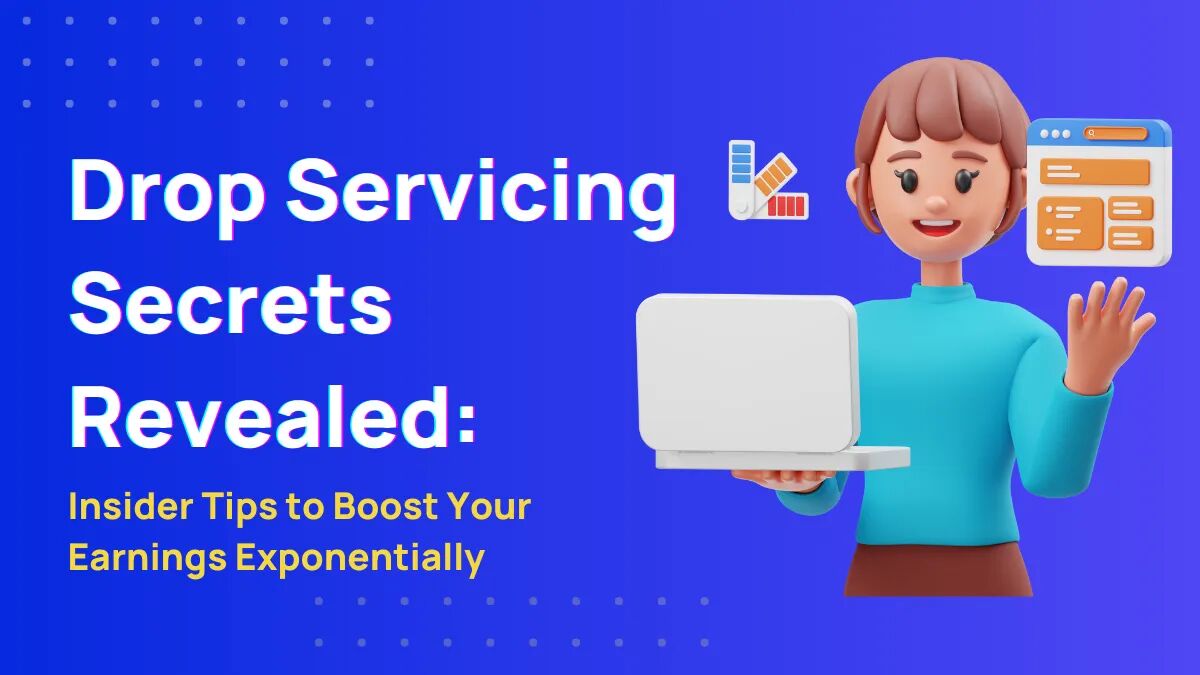In today’s digital age, the landscape of entrepreneurship is constantly evolving. With the rise of the gig economy, new business models are emerging, offering exciting opportunities for individuals looking to capitalize on their skills and expertise. One such model that has gained significant traction is drop servicing.
Table of Contents
In this article, we will explore the concept of drop servicing, its benefits, and how you can leverage this innovative approach to create a successful online business.
What is Drop Servicing?
Drop servicing is a business model where entrepreneurs act as intermediaries, connecting clients in need of services with skilled professionals who can fulfill those requirements. Unlike traditional service providers, drop servicing entrepreneurs do not perform the services themselves but rather outsource the tasks to third-party experts.
Process of Drop Servicing: How Does Drop Servicing Work?
Market Research: The first step in drop servicing is to identify a profitable niche or service category that has a demand in the market. This requires thorough market research and analysis to understand the needs and pain points of potential clients.
Building a Website: A professional website is crucial for establishing credibility and attracting clients. The website should be visually appealing, user-friendly, and optimized for search engines to enhance its online visibility.
Service Selection: Once the niche is identified, it’s time to select the specific services that will be offered. It’s essential to choose services that align with your target audience’s needs and have a competitive advantage in terms of quality, pricing, or turnaround time.
Finding Service Providers: As a drop servicing entrepreneur, you will need to find reliable and skilled service providers who can deliver high-quality results to your clients. Building a network of trusted professionals is vital for long-term success in drop servicing.
Client Acquisition: Implementing effective marketing strategies is crucial to attract clients and generate leads. Utilize various digital marketing techniques, such as search engine optimization (SEO), social media marketing, and content marketing, to reach your target audience and establish a strong online presence.
Client Management: Once you acquire clients, it’s essential to provide excellent customer service and manage their expectations effectively. Communication and transparency play a pivotal role in maintaining client satisfaction and fostering long-term relationships.
Scaling Your Business: As your drop servicing business grows, consider expanding your service offerings, optimizing your operations, and streamlining processes. Continuously analyze market trends and adapt your business strategy to stay ahead of the competition.
Benefits of Drop Servicing
Drop servicing offers several advantages for entrepreneurs looking to enter the service industry. Some key benefits include:
1. Low Overhead Costs
Unlike traditional businesses, drop servicing requires minimal upfront investment. You don’t need to worry about setting up physical locations or purchasing expensive equipment. This makes it an accessible option for aspiring entrepreneurs with limited capital.
2. Leveraging Expertise
Drop servicing allows you to leverage the skills and expertise of professionals in various fields. You can focus on building your business, marketing, and client management while relying on specialists to deliver top-notch services.
3. Scalability
Drop servicing businesses have the potential to scale rapidly. As an intermediary, your primary responsibility is to connect clients with service providers. This scalability factor allows you to handle multiple projects simultaneously, expanding your revenue streams and maximizing profits.
4. Flexibility and Freedom
With drop servicing, you have the flexibility to work from anywhere and at any time. As long as you have a stable internet connection, you can manage your business remotely, enabling a better work-life balance and freedom to pursue other interests.
Conclusion
Drop servicing is a modern business model that offers entrepreneurs a unique opportunity to tap into the service industry without performing the actual services themselves.
By leveraging the expertise of skilled professionals and effectively connecting them with clients, drop servicing allows for scalable and profitable businesses.
With the right strategies and dedication, aspiring entrepreneurs can carve their niche in the drop-servicing landscape and unlock new opportunities in the service economy.
Remember, success in drop servicing requires dedication, continuous learning, and adaptability.
By staying abreast of industry trends and providing exceptional customer service, you can build a thriving drop servicing business that opens doors to financial independence and professional growth.
People Also Ask About Drop Servicing
Is drop servicing legal?
Yes, drop servicing is legal. It involves acting as an intermediary and connecting clients with service providers, which is a common business practice. However, it’s essential to ensure that you comply with all applicable laws and regulations in your jurisdiction.
How can I find reliable service providers for drop servicing?
Finding reliable service providers is crucial for the success of your drop servicing business. You can source professionals through freelance platforms, professional networks, or by reaching out to industry-specific communities. Conduct thorough research, review their portfolios, and communicate extensively before finalizing partnerships.
What are some effective marketing strategies for drop servicing?
Effective marketing strategies for drop servicing include search engine optimization (SEO) to improve your website’s visibility, content marketing to showcase your expertise and attract clients, social media marketing to engage with your target audience, and paid advertising to drive targeted traffic to your website. Experiment with different approaches and analyze their performance to refine your marketing strategy.
